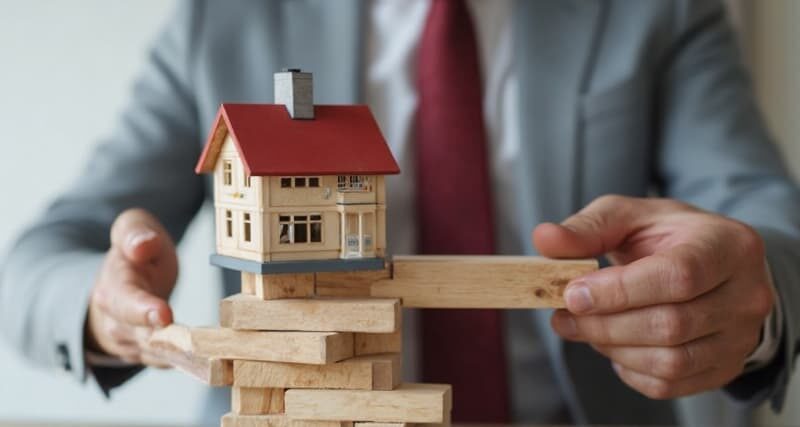Many countries are now showing signs of a potential real estate crisis or a major market correction.
The commercial sector — especially office and retail space — faces serious vulnerabilities such as high credit exposure and liquidity problems.
In China, the residential market remains weak: Goldman Sachs forecasts that prices could fall by around 10% by 2027.
Meanwhile, some global cities, such as Miami, are experiencing what analysts describe as a “real estate bubble”— high prices, low affordability, and shrinking demand.
Traditionally, experts assess risks in the property market by analyzing trends in pricing, construction activity, and demand shifts.
Yet, despite modern analytics, few can make precise forecasts. Why? Because many influencing factors are still unknown or emerge only later.
If your market is constantly fluctuating and often feels unpredictable, here’s some good news: A once‑classified military technique known as Remote Viewing can help anticipate events in the future.
The technique was first systematized during the U.S. government’s Stargate Project, which explored extrasensory perception for defense intelligence. Declassified CIA reports later showed that trained individuals sometimes produced verifiable data about remote targets, inspiring today’s civilian adaptations.
Remote Viewing Offers an Unconventional Advantage in Real Estate
This method challenges traditional boundaries.
Traditional econometric models depend on historical data — interest rates, housing supply, demand cycles — to forecast future trends. But these models often collapse when the world suddenly shifts. Events like pandemics, financial crises, or rapid policy changes can break old correlations overnight. That’s why even the most sophisticated analytics sometimes miss turning points.
Remote viewing taps into human intuition, which can process subtle, unquantifiable signals that data models overlook. Instead of relying solely on past performance, this method invites you to “see” potential outcomes before they appear in statistics — giving real estate professionals a new way to navigate uncertainty.
Explore How It Works
In practice, it looks like this:

You assign a task to a remote viewer — a person trained in this method. For example, you might ask them to “view” a specific house one year from now and describe its market price. The remote viewer doesn’t know what property it is; they receive only a coded number representing the target. Then, using their intuitive perception and trained focus, they “tune in” to the target and record what they perceive. Later, you analyze these notes and draw conclusions using the protocol.
The concept of remote viewing is based on the idea that all people possess intuitive or psychic abilities. Cognitive science suggests that intuition is often the rapid recognition of complex patterns processed subconsciously. In this view, remote viewing may represent an advanced form of intuitive data retrieval.
Modern experiments compare remote viewing data with real-world outcomes using blind protocols. While results vary, several controlled studies reported statistically significant correlations beyond chance levels.
However, these skills require practice, as the main challenge lies in decoding the information that appears in your mind correctly. The military protocol was created precisely for this purpose — to eliminate personal bias, which is difficult but achievable with consistent training.
The Even Better News? Train Remote Viewing Yourself
In the past, beginners needed a mentor or instructor to start practicing remote viewing. Today, however, you can begin on your own: everything is already structured, and you simply follow the process guidelines. It’s an engaging and fascinating experience — we tried it ourselves using the VEREVIO app, the best remote viewing tool on the market. It’s not only fun to use but also faithfully follows the original military principles that have stood the test of time.
Why Is Practice Essential to Mastering the Method?
The ultimate goal of practice is to move from unreliable guesses to repeated, verifiable accuracy. By training with different targets, you gradually enrich yourself with sensory perception beyond the usual five senses.
In a remote viewing session, you catch the target and try to extract as much data as possible — a challenging task for any beginner. But once you learn to detect the first gestalts — the overall impressions such as lifeforms, the origin of the object — you gain solid ground. When your body and consciousness become deeply familiar with these fundamental sensations, the only step left is to extend that familiarity to a remote target.
At first, it may feel like guessing. Over time, you develop the habit of “grabbing and sensing” the object, which forms a rock-solid foundation for deeper analysis. To strengthen this process, you must constantly replenish your internal library of sensory images. In VEREVIO, a large database of diverse targets was created precisely for this purpose — to accelerate learning and refine perception through structured practice
